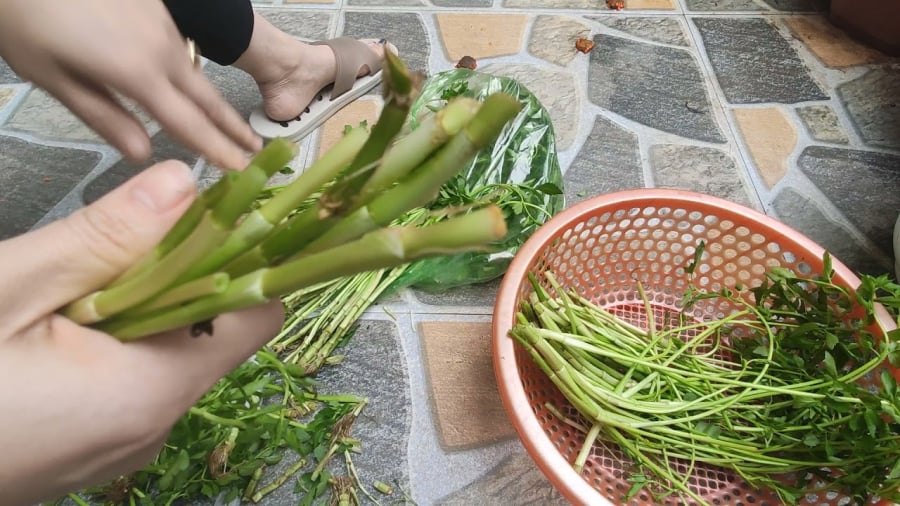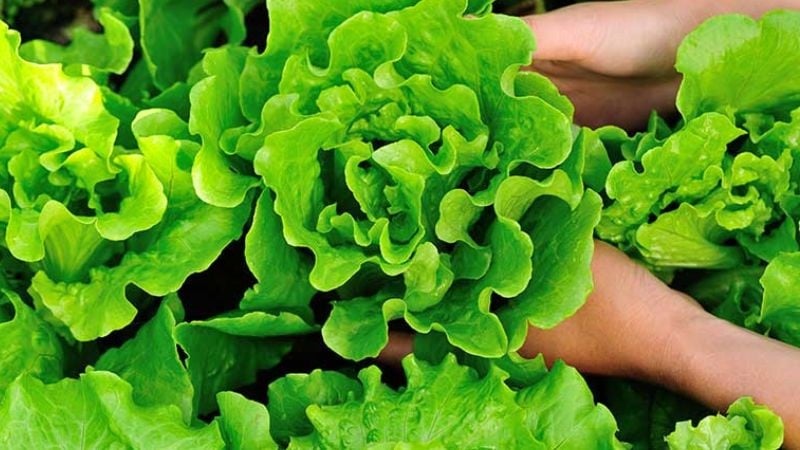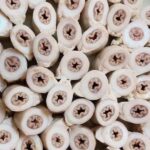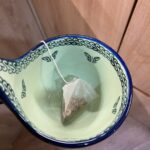Water Caltrop

2 Types of Vegetables that Harbour “Worms”: The First One is Commonly Eaten by Vietnamese
Water caltrop is an aquatic vegetable that primarily grows in water bodies. This environment provides ideal conditions for parasites such as large liver flukes and large intestinal flukes to thrive and attach themselves to the leaves.
Consuming these vegetables raw without thorough cleaning poses a high risk of parasitic infections, leading to liver, intestinal, and even neurological issues.
To safeguard your health, it is advisable to thoroughly wash the vegetables with clean water multiple times and consider soaking them in a dilute salt solution prior to cooking. Additionally, opt for purchasing vegetables from reputable sources that ensure food safety and hygiene.
Notably, in natural settings, the larvae and cysts of large liver flukes can adhere to aquatic vegetables. As a result, consuming undercooked aquatic vegetables like water caltrop, water spinach, water morning glory, lotus stems, or undercooked snails can introduce large liver flukes into the body.
According to reports from the Institute of Malariology, Parasitology, and Entomology, large liver fluke infections have been detected in 53 out of 60 provinces/cities across Vietnam, with approximately 10,000–15,000 cases reported annually.
Large liver flukes are commonly found in water-grown vegetables such as water caltrop, water spinach, water morning glory, watercress, and lotus stems. While boiling these vegetables for a few minutes will kill the parasites, consuming them undercooked carries a high risk of infection.
When individuals ingest the eggs of tapeworms through contaminated food, they become infected with pork tapeworm larvae. These larvae can migrate to various organs, including the brain, lungs, liver, and skeletal muscles, posing significant health risks.
Lettuce is Prone to Worm and Fluke Infections

2 Types of Vegetables that Harbour “Worms”: The First One is Commonly Eaten by Vietnamese
Lettuce, a leafy vegetable, is commonly used in salads or as an accompaniment to various dishes. When cut, lettuce leaves release a milky-white fluid, earning it the Latin name Lactuca, which translates to “milk.”
There are several varieties of lettuce available in the market, including butterhead lettuce, coral lettuce, curly lettuce, and Romaine lettuce.
Lettuce is not only a staple in family meals but also an essential ingredient in refreshing salads. In addition to its distinctive flavor, lettuce is a rich source of vitamins, minerals, and fiber, benefiting digestive health.
From the crisp butterhead lettuce to the cooling Romaine and sweet iceberg lettuce, each variety offers unique flavors and nutritional profiles. However, due to its layered and intricate leaf structure, lettuce is highly susceptible to contamination by worm eggs, flukes, and bacteria, posing health risks to consumers.
Useful Tip for Cleaning Vegetables
Many individuals believe that rinsing vegetables with two to three changes of water is sufficient. However, a more detailed cleaning process is necessary to ensure thorough cleanliness.
Vegetables can be categorized into four groups: leafy vegetables, fruits, roots, and flowers. Each type carries a different risk of contamination, and thus, specific cleaning methods are required.
– For large leafy vegetables like cabbage and lettuce, separate the leaves and rinse them thoroughly under running water to eliminate any parasites. Repeat the process for the other side of the leaves.
– For small, delicate vegetables like water spinach, watercress, and bitter melon, multiple rinses are necessary. Hold a small bunch of the vegetables in your hand and rinse them under running water. After washing under the tap, you can further clean them in a basin with one or two changes of water. To eradicate cholera bacteria, soak the vegetables in a diluted salt solution. For a 10-liter basin of water, add a teaspoon of salt and soak the vegetables for about 5 minutes. Avoid prolonged soaking to prevent the loss of essential vitamins and minerals.



































